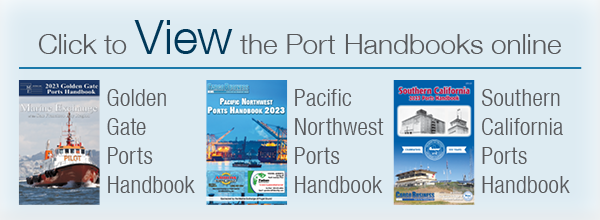|
By William DiBenedetto, CBN Feature Editor
Along with collaboration, supply chain visibility is a trending buzzword for shippers and their logistics partners, but can the Cloud provide a clear picture?
Ideally, it should. But the visibility situation is, well, somewhat cloudy. A report, "How to Enable End-to-End Supply Chain Visibility," from Gartner, the IT research and technology company, found that shippers and supply chain professionals "typically use business transaction networks in functional silos, such as logistics visibility, but don't leverage collaboration hubs or portal applications as an add-on capability or enterprise resource planning (ERP)/supply chain management (SCM) applications to extend visibility beyond immediate trading partners."
Gartner added that supply chain professionals should not view visibility as an end in itself. Because there are no currently available solutions that provide end-to-end visibility on a single platform, companies will probably wind up using multiple methods to improve profitability and enable customer value. Enterprise platforms thus should enable collaboration and participation for all parties, Gartner said.
That sounds somewhat complicated and expensive, but Gartner recommends that for visibility, the cloud "provides quicker time to productivity, required scalability, and decreased initial and capital cost."
So while the clouds might eventually part to make visibility and collaboration more efficient for shippers and their supply chains, a more pressing problem is facing shippers at the moment: cargo volume.
With the holiday shopping season over, import cargo volume at the nation’s major retail container ports is expected to slowly decline through the first quarter of the year, according to the monthly Global Port Tracker report released earlier this month by the National Retail Federation and Hackett Associates.
Ports covered by Global Port Tracker handled 1.48 million TEUs in November, the latest month for which after-the-fact numbers are available, NRF said. With most holiday merchandise already in the country by that point, volume was down 5 percent from October but up 6 percent from the year before. December was estimated at 1.44 million TEU, the same as 2014.
Port Tracker covers the ports of Los Angeles/Long Beach, Oakland, Seattle and Tacoma on the West Coast; New York/New Jersey, Hampton Roads, Charleston, Savannah, Port Everglades and Miami on the East Coast, and Houston on the Gulf Coast.
"This is the time of year when the retail supply chain catches its breath before the next big rush begins," said Jonathan Gold, NRF vice president for supply chain and customs policy.
The ports of Los Angeles and Long Beach finished the year in fairly good shape despite the severe congestion problems they endured while the labor contract dispute with the ILWU dragged on. LA closed 2015 with 8.1 million TEUs, a slight decline
of 2.1 percent, while Long Beach’s TEU total, increased 5.4 percent to nearly 7.2 million TEUs. Each port got off to great starts this year with total
|

TEU volumes in January up almost 25 percent (year-on-year) at Long Beach and 33 percent at LA, the busiest month in that port’s history.
On the East Coast the Port of New York and New Jersey handled nearly 6.4 million TEUs last year, up 10.4 percent over the previous record set in 2014.
Referring to the Port Tracker numbers, NRF said 2015 ended with a preliminary total of 18.2 million TEUs, up 5.4 percent from 2014. This month is forecast at 1.47 million TEU, up 18.9 percent from the weak volume experienced a year ago, which was just prior to an agreement on a contract with West Coast dockworkers that ended months of congestion. February is forecast at 1.41 million TEU, up 17.5 percent, also skewed by the congestion. March is forecast at 1.34 million TEU, down 22.4 percent from high levels seen when a flood of backlogged cargo followed the contract agreement.
Volume patterns are expected to return to normal in April, which is forecast at 1.48 million TEU, down 1.8 percent from last year. May is forecast at 1.55 million TEU, down 3.5 percent from last year.
But uncertainties abound—forecasts, as always, are subject to sudden change and there are plenty of wildcards that could change outcomes. For example, the one-day wildcat strike by East Coast dockworkers in early February sent an ominous signal to shippers. The expanded Panama Canal, due to open in June, and its impact on East-West cargo flows, is still pretty much a mystery. Another worry for shippers, ports and ship operators is the pending UN Safety of Life at Sea (SOLAS) container weight documentation rule.
In its 2016 economic forecast released on Feb. 10, the NRF projected retail industry sales (which exclude automobiles, gas stations and restaurants) will grow 3.1 percent, higher than the 10-year average of 2.7 percent. NRF also announced it expects non-store sales in 2016 to grow between 6 and 9 percent.
"Wage stagnation is easing, jobs are being created and consumer confidence remains steady, so despite the headwinds our economy faces from international developments — particularly in China — we think 2016 will be favorable for growth in the retail industry," said NRF President and CEO Matthew Shay. "All of the experts agree that the consumer is in the driver’s seat and steering our economic recovery. The best thing the government can do is stay out of the way, stop proposing rules and regulations that create hurdles toward greater capital investment and focus on policies that help retailers provide increased income and job stability for their employees."
Next: US shippers confront UN box weigh-in rules
|





